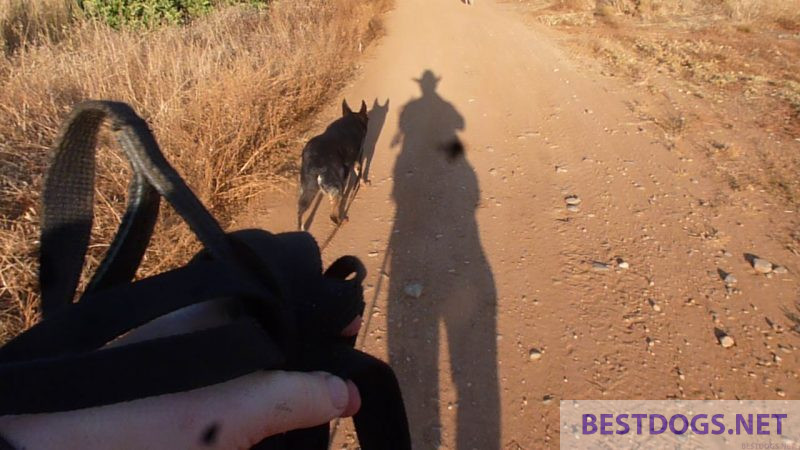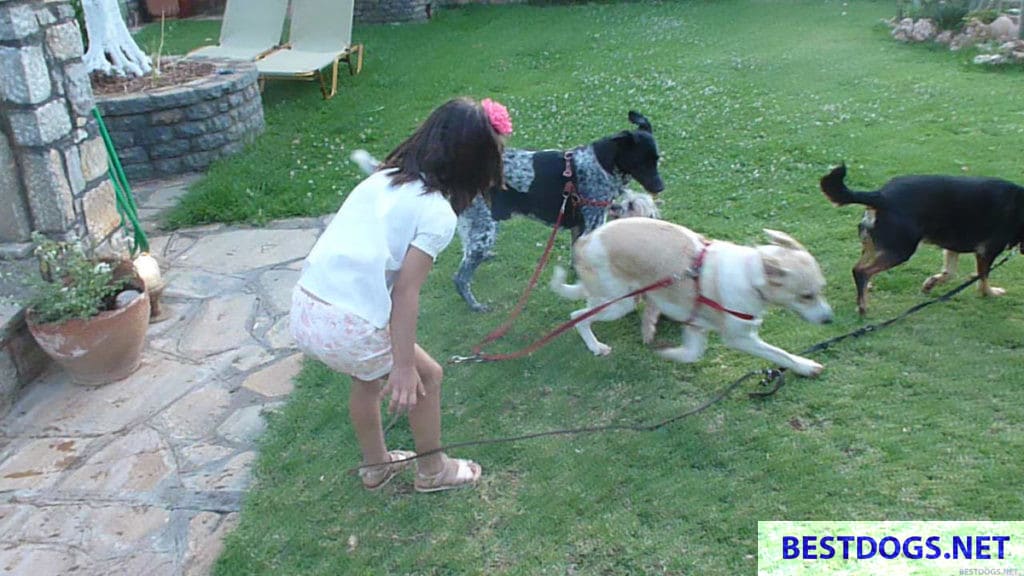Dominance to clarify the order of precedence in the mixed human-dog pack.
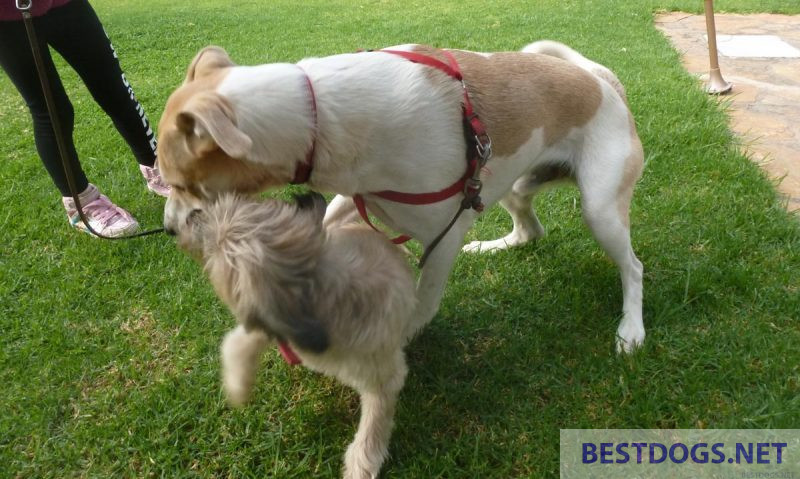
The importance of dominance in the relationship with the dog.
Dominance with dogs
Table of Contents
The word ‘dominance’ and in particular the term a ‘dominant dog’ have divided dog owners into two groups, proponents and opponents of the principle of ‘dominance hierarchy’ between dogs and their owners.
A dominance hierarchy classically refers to the organization of a group of animals of the same species, and control refers to over a group of animals of the same species.
However, since dogs and humans are different species, the dominance hierarchy must at least be questioned, because almost certainly dogs do not look at us humans the same way they do toward other canine conspecifics.
Dominance hierarchies
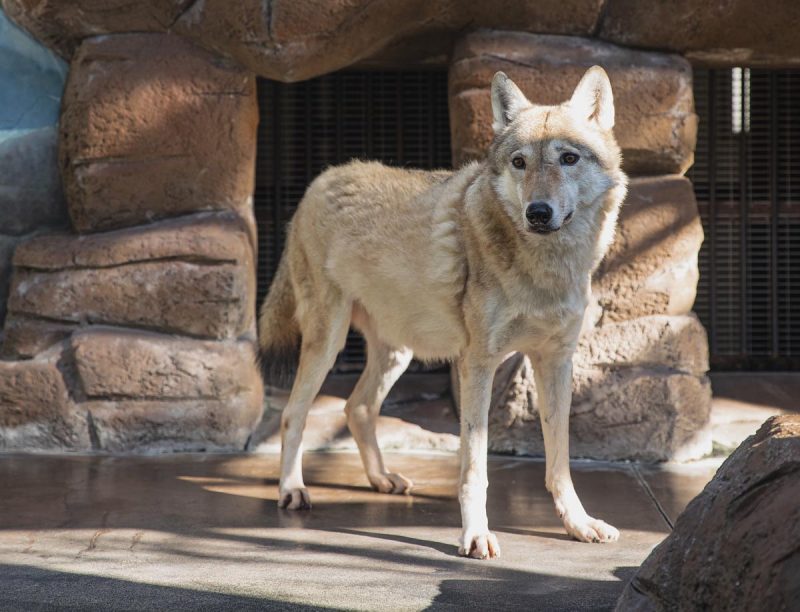
There is evidence that the domestic dog, Canis Familiaris, existed over 15,000 years ago. Despite the changes that domestication brought, genetic analysis has shown that the domestic dog is a very close relative of the gray wolf, Canis Lupus, differing in mtDNA sequence by no more than 0.2 percent.
This is significant for all dog owners, as fundamental insights into dog behavior and training can be gained from this information. However, our understanding of wolves is inadequate because most of our knowledge comes from research on captive wolves. However, these are not necessarily related to each other or came from one pack, but were gathered from different locations and kept together for many years.
When the term ‘Alpha‘ is applied to a single member of a species, it refers to the leading animal of a dominance hierarchy.
D.L. Mech discovered that the classic dominance hierarchy previously recognized in captive wolf populations is actually different in the wild wolf pack. Far from enforcing dominance with aggression, he claims that dominance fights with other wolves are rare, and he did not see a single instance of them during thirteen summers of observing a wolf pack in the wild.
In reality, the wolf pack is a family consisting of a breeding pair and their offspring, which range from newborns to three-year-old wolf cubs. The offspring leave the pack as soon as they are ready to mate.
Although the domestic dog is genetically very similar to the gray wolf, they actually differ significantly. The domestic dog has a much smaller brain than the wolf, and the behaviors of an adult domestic dog – whining, barking, and submissiveness – are found only in young wolves and not in adult specimens. This is thought to be caused by a process of delayed development that results in juvenile wolf characteristics in mature domestic dogs and is called neoteny.
There is some evidence that these immature behaviors are the result of domestication. Since tameness and aggression are regulated by hormones, selection for tameness and against aggression may have caused a change in physiological traits associated with domestication and neoteny.
In 1959, a breeding program began with 100 female dogs and thirty male foxes. Although selected only for tameness, many changes similar to the dog took place in the foxes: Skulls became broader and muzzles became shorter.
There were even individuals with floppy ears, shortened tails, curled tails and pied fur. Later in the study, which spanned the 20th to 21st centuries, the foxes on this breeding farm also showed signs of a change in the reproductive cycle with biennial estrus, a trait also found in the domestic dog and not the wolf.
This research supported a recent theory that the dog did not evolve directly from the wolf, but practically domesticated itself to take advantage of a new ecological niche, namely the Mesolithic village dumps.
Researchers assume that the domestic dog evolved from these wild village dogs or village wolves. Arguing that no one has ever successfully trained a wolf, they assume that these village dogs were better suited to be made docile by humans and easily trained to perform the tasks they desired.
Neoteny in dogs suggests that they are mentally in the adolescent wolf or wolf cub stage, and therefore psychologically unprepared to assume responsibility for a pack. Therefore, the idea that they need a paternal or maternal person rather than an authoritarian leader is more appropriate and realistic.
SHEBA PERFECT PORTIONS Paté Adult Wet Cat Food Trays (24 Count, 48 Servings), Signature Seafood Entrée, Easy Peel Twin-Pack Trays
$25.98 (as of April 25, 2024 09:07 GMT +03:00 - More infoProduct prices and availability are accurate as of the date/time indicated and are subject to change. Any price and availability information displayed on [relevant Amazon Site(s), as applicable] at the time of purchase will apply to the purchase of this product.)Chom Chom Roller Pet Hair Remover and Reusable Lint Roller - ChomChom Cat and Dog Hair Remover for Furniture, Couch, Carpet, Clothing and Bedding - Portable, Multi-Surface Fur Removal Tool
$27.99 (as of April 25, 2024 09:07 GMT +03:00 - More infoProduct prices and availability are accurate as of the date/time indicated and are subject to change. Any price and availability information displayed on [relevant Amazon Site(s), as applicable] at the time of purchase will apply to the purchase of this product.)Wellness Soft Puppy Bites Natural Grain-Free Treats for Training, Dog Treats with Real Meat and DHA, No Artificial Flavors (Lamb & Salmon, 8-Ounce Bag)
$5.01 (as of April 24, 2024 09:05 GMT +03:00 - More infoProduct prices and availability are accurate as of the date/time indicated and are subject to change. Any price and availability information displayed on [relevant Amazon Site(s), as applicable] at the time of purchase will apply to the purchase of this product.)Other researchers also found that domesticated dogs living as street dogs do not form packs with dominance hierarchies because, unlike the wolf or wild dog, they do not need to form large packs to hunt prey because they are provided with food by humans.
Finally, a dominance hierarchy usually refers to a group of animals of the same species. Therefore, we must question the possibility of a hierarchy consisting of two different species. By claiming that they see us humans in the same way as ‘other dogs’, we seem to be making it too easy.
Our ‘young wolf’, the domestic dog, is not yet mature enough to take responsibility and lead the leadership of a pack. Therefore, it is unlikely that he views humans as other dogs, nor does he have a need to control possessions or food. All this suggests that some, if not all, so-called ‘dominant behaviors’ are the result of a different psychological process.
Two groups of dog owners
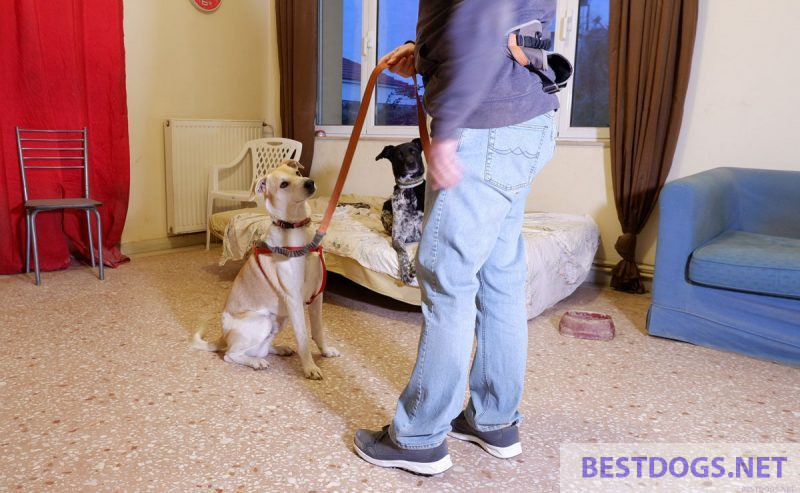
Some are of the time-honored opinion that our pet dog is likely to start a ‘fight for dominance’ with us. They believe that they must pre-empt such an attempt by showing their new dog that they are in charge, and he is in the back of their ‘pack’.
They stress that they must suppress any ‘dominant behavior’ and ‘show him who’s boss’ to ensure that he does not threaten their dominance. If this does not succeed, they believe, a ‘dominant dog’ will develop who assumes it is the pack leader and consequently ignores their commands and generally does whatever it pleases.
On the other side are those who believe that dominance hierarchies between owners and their dogs do not exist in any real sense of the word, as suggested by the latest research described in the previous section.
A dog’s behavior that is commonly perceived as ‘dominant’ must be the result of some other psychological process. In their view, attempts to demean a dog’s ‘status’ are not only unnecessary and confusing for the dog, but can also jeopardize the entire relationship with it.
They believe that with the help of training and leadership, you can live harmoniously with your dog without the constant pressure of having to assert your dominance over him.
Therefore, it makes sense to question whether it is fair and necessary to call your dog dominant, and most importantly, whether or not this contributes to the successful placement of a rescue dog.
Alternative hypothesis

The idea of suppressing a dog to keep its dominance under control makes many open-minded dog owners uncomfortable, as many of the so-called ‘dominant’ behaviors can be caused by numerous other factors, especially a dog’s insecurity and fear. Moreover, these emotions are exacerbated when further conflict and stress are threatened.
It is therefore possible for a stressed, confused animal whose basic needs are disturbed to exhibit what is classically referred to as ‘dominant’ behavior. In reality, this is only a by-product of its emotional state, which humans have a direct influence on.
When a dog tries to go through a door in front of its owner, it may not want to demonstrate its superiority, but just want to see what is on the other side.
If the dog jumps on the sofa, he may not be intentionally claiming the highest status seat, but has simply found a comfortable place to sit.
If the dog growls at master because he storms across the room, screaming and waving his hands to pull him off the sofa, it may be that he feels threatened and afraid – so his defensive behavior in response to master’s aggressive body language may have little to do with dominance.
Similarly, dogs that growl at their owners when the latter try to remove the food bowl halfway through a meal may not be dominant.
This is not to say that any of these behaviors are desirable or acceptable – however, dogs are complex mammals with survival instincts not unlike our own.
They are able to feel emotions, including stress and fear, and recognize when to engage in threatening behaviors. Given this, we should be sympathetic to their response to perceived threats and strive to understand why they feel this way.
If we replace the adjective ‘dominant’ with ‘survival’, like a ‘survival behavior’, then we recognize that something is very wrong in a relationship where a dog is exhibiting a ‘survival behavior’, especially towards a human.
This, in turn, leads us to wonder what could have gone wrong, which leads us to suspect that it could be fear of the phantom of the ‘dominant dog’.
Effects on the dog

The problem now is that the terminology ‘dominant dog’ often has a direct impact on how people treat the animal.
When people believe that their dog is challenging their status, they are often very quick to do anything to push it into a submissive role. At their mildest, attempts to reduce ‘dominance’ are limited to obedience and control, such as teaching the dog to walk behind him through the door instead of pulling him through, or leading him by the heel.
From a safety and practical point of view, this is always beneficial, but among those representatives of humanity who fear for their own dominance, this is seen primarily as a means of asserting their own authority.
With more extreme contemporaries, the ‘dominant dog’ can be ‘forced’ to subordinate by punishment. This happens then despite the possibility that his behavior does not have as cause the ‘purposeful assumption of power’ as intention.
The reason for punishment is that it supposedly occurs in the wild and is therefore appropriate in the home environment. The use of punishment stems from the false belief that the alpha male in a wolf pack seeks to establish and enforce his authority by inflicting pain on his subordinates.
In fact, behaviors such as dominance and submission develop in wolves during the period when the mother begins to reduce her cubs’ dependence on her. In response to the mother’s snapping, growling, or biting, the cubs lie on their backs and adopt a posture that we call ‘submission’.

This attitude is also seen in our domesticated dogs, and it is generally thought to be a reaction to a dominance gesture. However, the puppy is not afraid of the mother, but shows that he knows he has angered her and is willing to change his behavior. When we look at dominance-submission from the perspective of parental care, we see that our young dog sees us more as protectors who are responsible for his welfare and the effects of his behavior, rather than as pack leaders whose position he must challenge.
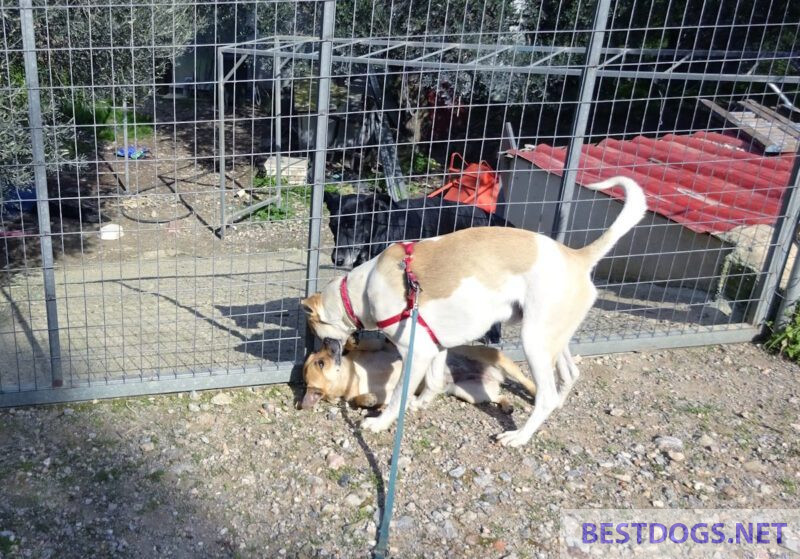
No alpha wolf will succeed in getting his pack members to ‘heel’ or ‘make way’ at a distance of 20 paces when given a certain sign. It is not even possible for him to force unwilling or lazy pack members to go hunting with him.
Regardless of whether you assume your dog is trying to dominate you or not, training methods that do not cause pain and suffering should always be used.
In the absence of definitive proof that cross-species hierarchies exist, the hypothesis that so-called ‘dominant behavior’ may be the result of other processes is quite reasonable.
Consequences of negative training

As an intelligent, higher species, not only do we have a moral obligation to avoid inflicting pain and suffering on another living creature, but the consequences of such actions can cause a significant number of behavioral problems in our dogs.
Of great concern is that punishment leads to fear, and fear is the cause of many behavioral problems, including aggression. It can produce a very insecure or defensive individual and ironically lead to increased ‘survival’ behavior.
Training with punishment is not only unfair and unreasonable, but can also be dangerous and destructive. Moreover, the same results can be achieved without such methods.
It can only be in everyone’s interest to consider the effects of their own behavior on the dog and to consider the effects of a particular training. For this purpose, it is also necessary to take into account the bond of the dog with the human.
To be dominant towards the dog, it is usually enough to be calm, friendly and tolerant. Because just like in a dictatorship, only the one must get upset, bully or punish others, whose position is already endangered.
This is primarily about leading the pack. That is, the alpha animal initiates an activity and the others join in, not vice versa. The alpha wolf acts self-confident and strong-willed, and does so naturally and purposefully.
It can happen in nature that a higher-ranking animal punishes a lower-ranking one briefly and harshly, if it touches privileges or becomes challenging, but this is extremely rare in an intact pack with a stable hierarchy.
The hierarchy is not maintained by physical confrontations, but by many small gestures during the daily routine.
Also, the domestic dog as the ‘Alpha’ in the ‘human-dog pack’ is completely overwhelmed and appears stressed and hectic. If he is then in a lower ranking, these dogs are much more balanced and content.
Clarify dominance
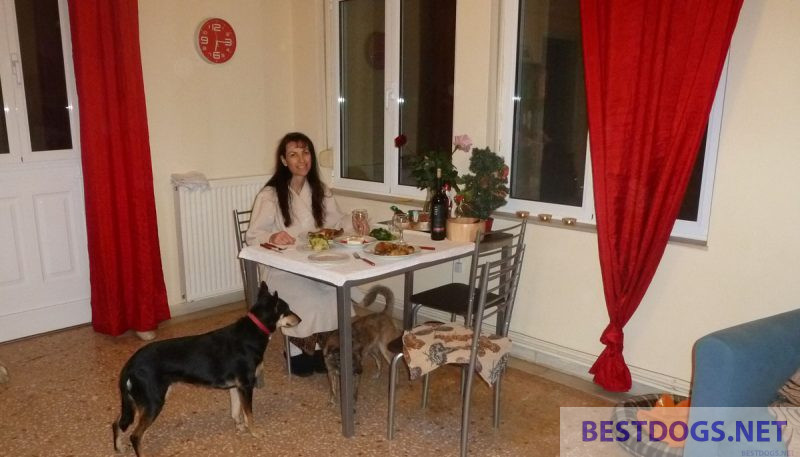
To clearly establish dominance over the dog, the following options are available:
- Food, extra portions of treats, games, petting, and walks occur only when the owner instigates it, not when the dog wants them.
- At certain times of the day, the dog should be completely ignored, while at another time, the owner should be intensively engaged with the dog.
- Games, petting, exercises should be finished by yourself before the dog loses the desire.
- Pushing, shoving and blocking passages is not allowed.
- Attention should be paid to games, because there the ‘subordinates’ test how much ‘alpha’ will put up with.
- High-ranking pack members eat before the lower-ranking ones and can also allow themselves to leave their food without it being stolen. Therefore, the dog should be fed after its own meal or at completely different times of the day.
- Certain places, such as the sofa, the TV chair or the bed, the dog should be allowed to share only after permission.





